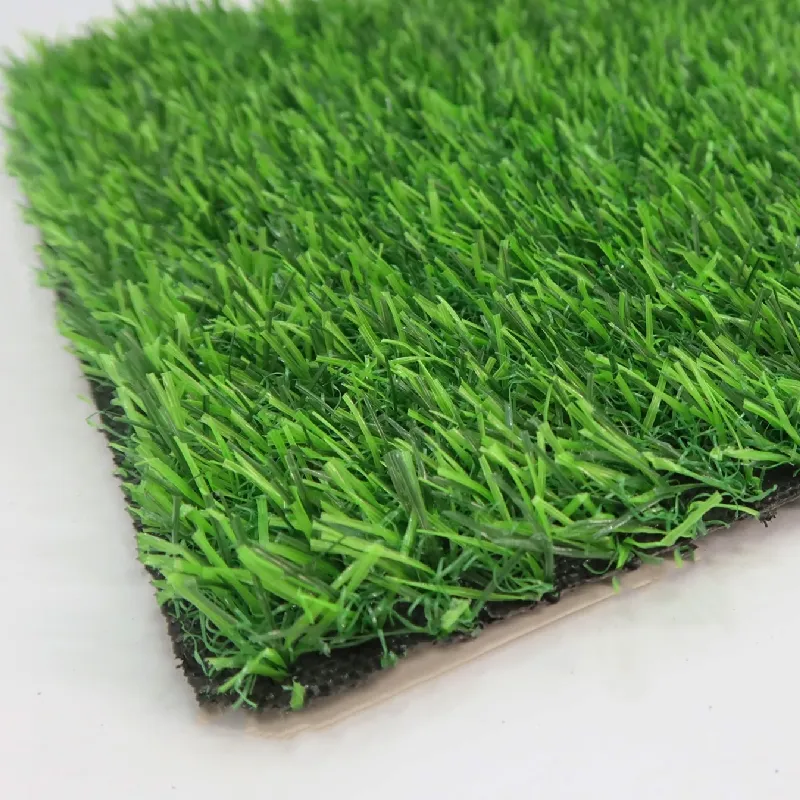
- Afrikaans
- Arabic
- Belarusian
- Bengali
- Czech
- Danish
- Dutch
- English
- Esperanto
- Estonian
- Finnish
- French
- German
- Greek
- Hindi
- Hungarian
- Icelandic
- Indonesian
- irish
- Italian
- Japanese
- kazakh
- Rwandese
- Korean
- Kyrgyz
- Lao
- Latin
- Latvian
- Malay
- Mongolian
- Myanmar
- Norwegian
- Persian
- Polish
- Portuguese
- Romanian
- Russian
- Serbian
- Spanish
- Swedish
- Tagalog
- Tajik
- Thai
- Turkish
- Turkmen
- Ukrainian
- Urdu
- Uighur
- Uzbek
- Vietnamese
Benefits of Synthetic Grass for Soccer Fields and Player Performance
Dec . 14, 2024 07:53 Back to list
The Rise of Synthetic Grass in Soccer Revolutionizing the Game
In recent years, synthetic grass has significantly transformed the landscape of soccer. As the world’s most popular sport continues to grow, so does the need for reliable, durable, and versatile playing surfaces. Synthetic grass, often referred to as artificial turf, has emerged as a viable solution that meets the demands of players, clubs, and organizations alike.
One of the foremost advantages of synthetic grass is its ability to provide a consistent playing surface regardless of weather conditions. Traditional grass fields can become muddy, uneven, and unplayable during rainy seasons. In contrast, synthetic fields drain well and remain usable even during inclement weather. This reliability allows for more frequent training sessions and matches, ensuring that teams can maintain their competitive edge without the disruptions caused by poor field conditions.
The Rise of Synthetic Grass in Soccer Revolutionizing the Game
Cost-effectiveness plays a pivotal role in the widespread adoption of synthetic grass. While the initial investment can be higher than that of natural grass, the long-term savings are significant. Synthetic fields require less maintenance, eliminating the need for regular mowing, watering, and fertilization. This reduction in upkeep costs can be particularly beneficial for schools and clubs with limited budgets. Furthermore, artificial turf has a longer lifespan than natural grass, often lasting more than a decade with proper care. As a result, the overall financial burden on organizations is alleviated, allowing resources to be allocated to other critical areas such as training and development.
synthetic grass soccer

Moreover, synthetic grass fields can be used for a variety of sports, making them versatile assets for multi-sport facilities. This adaptability allows sports complexes to maximize usage, accommodating soccer, football, field hockey, and other activities all year round. Arguments favoring multi-use fields highlight how they can promote community engagement, encouraging more people to participate in physical activities, which is vital in addressing public health concerns related to sedentary lifestyles.
Despite its numerous advantages, synthetic grass is not without its critics. Concerns have been raised regarding environmental impacts, particularly regarding the materials used in manufacturing synthetic turf and the potential for heat retention. However, recent advancements have led to the development of more eco-friendly options, including turfs made from recycled materials and those with heat-reflective properties, making them more suitable for diverse climates.
As the movement towards synthetic grass continues, it is crucial to strike a balance between innovation and traditional values in soccer. The principles of fair play, sportsmanship, and the love of the game remain paramount. While synthetic grass offers superior functionality, it is essential for clubs and organizations to embrace these changes thoughtfully, ensuring that the integrity of the sport is preserved.
In conclusion, the advent of synthetic grass in soccer marks a significant evolution in how the game is played and experienced. With benefits ranging from enhanced safety and reduced maintenance costs to increased accessibility and versatility, synthetic turf presents a compelling case for its widespread adoption. As soccer continues to captivate millions around the globe, synthetic grass may well play a vital role in shaping the future of this beautiful game.
-
The Benefits of Artificial Turf for Indoors
NewsJul.15,2025
-
How Artificial Grass Suppliers Ensure Quality Products
NewsJul.15,2025
-
Artificial Grass and Pets: A Space for Relaxation
NewsJul.08,2025
-
Balcony & Outdoor Decoration with Artificial Grass
NewsJul.08,2025
-
Best Indoor Artificial Grass for Home
NewsJul.07,2025
-
Best Pet Turf for Dogs: Safe & Durable Artificial Grass Options
NewsJul.07,2025
Products categories









